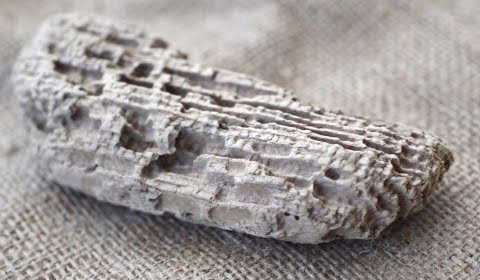“What is harder than stone, yet softer than water?”
Ovid once posed this riddle in Metamorphoses. Somewhere along the Anatolian coast, an old tale may hold an answer—woven not with words but with waves, not carved in stone but etched into wood. The tale is carried by the selentis.

Selenti: a word born of Anatolian soil, shaped by the supple genius of Turkish. Rooted in folk speech, and formed through playful invention and old suffixes like -inti and -untu, selenti found its voice just as other poetic hybrids like görüntü (image) or kalıntı (remnant) did. On the rugged Black Sea coast, it even bears another name—Çatık. The Turkish Language Society defines it plainly: “debris carried by floodwaters.” But that, to me, is like calling a violin a wooden box with strings. A selenti is far more than driftwood. It is poetry written by the sea. It is time, made tangible.
I first heard the word on a quiet trip to Assos with my wife. A local farmer used it casually, as if it were nothing special. But the name, and the piece we found, left a deep impression on both of us. It felt like discovering a secret work of art, unsigned but unmistakably shaped by the world’s oldest artist—nature itself.
The story of a selenti begins not with intention, but with accident. A piece of wood falls into the sea—perhaps dropped, forgotten, or torn loose by a storm. From that moment on, it belongs to the water. And the sea does not show mercy.
Waves begin their work. Not as a blunt force, but as an artisan. For months, sometimes years, the currents toss the wood from shore to shore. It is dragged, flipped, thrown, and caressed. The ocean becomes a sculptor with no tools but its own motion. Sometimes playful as a child with a toy, other times methodical like a master shaping marble. Together, they dance—the sea and the wood—until something new is born.
The salt does its part too. It seeps in, softens the grain. The surface changes. The sharp edges yield. The once-stiff form becomes supple, even silky—like the skin of something living. And when the time is right, the sea releases it. The selenti washes ashore, rolling gently into the sand as if lying down to sunbathe after a long, wild journey.
There it waits. Not as trash, but as treasure—hidden in plain sight among the beach’s castoffs. A relic of patience. A sculpture in disguise. Its creation may have taken decades, but its completion requires only one final touch: to be noticed.
And when someone finally does notice—when they reach down and pick it up—the work is finished. The selenti has found its witness.
What remains in the hand is astonishing: an object without corners, with a texture as smooth as velvet and a scent faintly of the sea. Each one is different. Each carries the memory of its own particular voyage. And when I hold a new one for the first time, I feel I am holding time itself—its quiet force, its power to transform.
So, what is harder than stone, yet softer than water?
Maybe the real riddle is this: does water become hard over time, or does the wood become soft? And if time can change even the nature of things, how might it change us?
I often ask myself: How can I make use of this quiet power in my own life? What can I learn from a selenti—or from the thousand other quiet sculptures nature leaves scattered in our path?
To me, listening to a selenti is a kind of nourishment. It’s a way of drawing strength from the unseen forces at work all around us. Nature is a sculptor, yes—but also a healer, a musician, a poet, an architect. Whatever you seek, whatever you need—when you turn to nature, it answers in kind.
You just have to know how to listen.